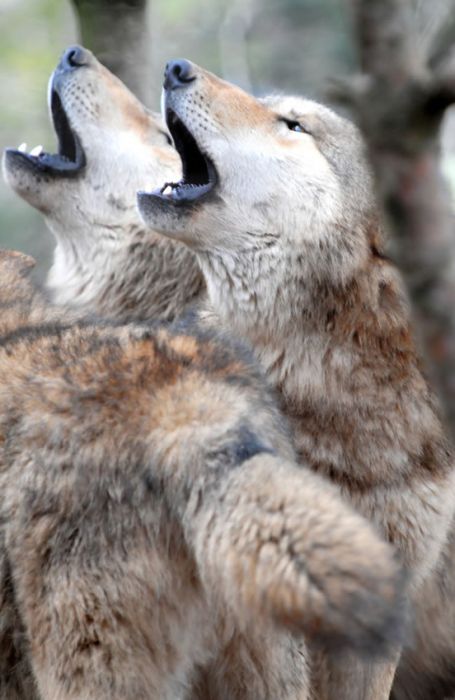Gray Wolf
|
Wolves are generally not dangerous to humans, as long as they are in low numbers, have sufficient food, have little contact with humans and are occasionally hunted. The number of people attacked and killed by wolves varies geographically. Wolf attacks on humans were a rare, but occasional feature of life in pre-20th century Europe: in France alone, historical records indicate that during the period 1580–1830, 3,069 people were killed by wolves, of whom 1,857 were killed by non-rabid wolves. Church and administrative accounts from Italy indicate that 440 humans were killed by wolves during the 15th and 19th centuries, occurring in the central part of the Po Valley, which once encompassed part of modern day Switzerland. Prior to 1882, 94 children under the age of 12 were killed in Fennoscandia by non-rabid wolves in a 300 year period. European Russia also records numerous attacks, particularly in pre-revolutionary times and after World War II. Between 1840 and 1861, 273 non-rabid attacks resulting in the deaths of 169 children and 7 adults occurred throughout Russia, while between 1944 and 1950, 22 children between the ages of 3 and 17 were killed by wolves in the Kirov Oblast. There are numerous documented accounts of wolf attacks in the Asian continent, with three Indian states reporting a large number of non-rabid attacks in recent decades. These attacks were well documented by trained biologists. In Hazaribagh, Bihar for example, 100 children were injured and 122 killed from 1980 to 1986. The North American continent has very few recorded incidences of such, though the oral history of some Native American tribes confirms that wolves occasionally did kill humans. Tribes living in woodlands feared wolves more than their tundra-dwelling counterparts, as they could encounter wolves suddenly and at close quarters. It is thought that the reason why so fewer attacks are recorded in North America than in Eurasia is linked to the former's historically greater availability of firearms, whose usage taught North American wolves to fear humans more than their Eurasian counterparts. However, encounters with aggressive wolves in North America seem to be on the increase. One study revealed 80 events in Alaska and Canada where wolves closely approached or attacked people, finding 39 cases of aggression by apparently healthy wolves, and 29 cases of fearless behavior by nonaggressive wolves.
Recorded incidences of rabid wolves in Eurasia go far back as the 13th century. The number of cases of rabid wolves are however low when compared to other species. Wolves do not serve as primary reservoirs of the disease, but can catch it from other animals such as dogs, jackals and foxes. Cases of rabies in wolves are very rare in North America, though numerous in the eastern Mediterranean, Middle East and Central Asia. Wolves apparently develop the "furious" phase of rabies to a very high degree. This, coupled with their size and strength, make rabid wolves perhaps the most dangerous of rabid animals, with bites from rabid wolves being 15 times more dangerous than those of rabid dogs. Rabid wolves usually act alone, travelling large distances and often biting large numbers of people and domestic animals. Most rabid wolf attacks occur in the spring and autumn periods. Unlike with predatory attacks, the victims of rabid wolves are not eaten, and the attack generally only lasts a day. Also, the victims are chosen at random, though the majority of cases involve adult men.
Predatory attacks usually involve single wolves or packs that learn to exploit humans as prey. Such attacks may be preceded by a long period of habituation, in which wolves gradually lose their fear of humans. The victims are generally attacked in a sustained manner around the neck and face, and are then dragged off and consumed, unless the wolves are disturbed. Such attacks tend to cluster in time and space until the offending animals are killed. Predatory attacks can occur at any time of the year, with a peak in the June–August period, when the chances of people entering forested areas (for livestock grazing or berry and mushroom picking) increase, though cases of non-rabid wolf attacks in winter have been recorded in Belarus, the Kirovsk and Irkutsk districts, Karelia and Ukraine. Also, wolves with pups experience greater food stresses during this period. The majority of victims of predatory wolf attacks are children under the age of 18 and, in the rare cases where adults are killed, the victims are almost always women. Non-rabid wolves are able to distinguish between armed and unarmed people, and will typically avoid investigating people who display self confident demeanors typical of being armed.
Wolves may react aggressively in self defense, though such attacks are mostly limited to quick bites on extremities, and the attacks are not pressed.
|
|









